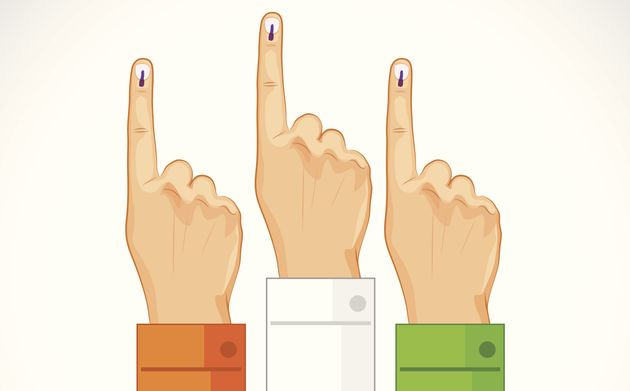
Image Source: huffingtonpost.in
You don’t like the BJP candidate? You don’t like the INC candidate either? And no other candidate for that matter? Well, the Supreme Court of India came to your rescue in 2013 by directing the Election commission to include another option called NOTA (None of the Above) in the secret ballot, using which you can reject all candidates that stand for elections.
But wouldn’t you rather stay at home and not vote at all? Let’s discuss.
What happens when NOTA wins?
In India, if NOTA wins the majority of the votes, the candidate with the second highest number of votes wins the elections. Well, then what’s the use? NOTA shouldn’t make any difference then? Well, NOTA, in India, was introduced as a means to provide feedback to all the parties so that they field better candidates to vote for.
Why was NOTA introduced?
In the words of the Supreme court, “Negative voting will lead to a systematic change in polls and political parties will be forced to project clean candidates.” The court also went on to say, “If the right to vote is a statutory right, then the right to reject a candidate is a fundamental right of speech and expression under the constitution.”
Can NOTA influence elections?

Case 1 (Without NOTA): “I’ll vote for party B because what other option do I have?”

Case 2 (With NOTA): “I can reject all candidates? Let’s do this.”
Using NOTA extensively can tilt the balance in favour of another party and hence, influence elections. But wait! Didn’t you want to reject all candidates, not just party B? Yes, but at a macro level, if the above case happens for enough seats, the powers of the ruling party are limited in assemblies and the parliament making it difficult for them to pass laws that aren’t in the interest of citizens.
NOTA needs improvements
In order to make NOTA more effective, there needs to be a provision to disqualify all candidates if a certain percentage of people vote for NOTA. All the parties should be required to field new, cleaner candidates and then re-elections should be conducted. Only then will the true essence of this provision be realised.
Does that happen anywhere in the world though?
This system is used in various countries by different names such as “white vote”, “blank vote” among others. Most of the countries opting for this system have a provision of re-election if all the candidates are rejected by the voters. In 1991, re-elections were conducted in more than 200 seats in Soviet Union because people didn’t like the existing candidates and voted for none. There are many such instances across the world where NOTA has made a difference.
Some fun facts
Only one candidate once stood for elections in the city of Makassar in Indonesia in 2018. People didn’t like the only candidate and 53% of them voted for NOTA, leading to re-elections. Such is the power of NOTA
People in Serbia got creative and formed a party called “None of the Above party” because the country didn’t have a NOTA option in elections. This party managed to win a seat with 22,000 votes. This was more of a message to the authorities that people wanted such an option
A recent survey conducted in October 2020 in Chandigarh revealed that 37% of the people didn’t know anything about the NOTA option
In our country, even if NOTA doesn’t lead to re-elections right now, it needs to be taken very seriously. It sends a message to the political parties that we, as citizens, want them to field cleaner and better candidates. Right now we might not like any one of them. But sending this message through NOTA will compel at least one political party to listen to what the voters want and eventually, the parties would know that the only way to win the next elections is to focus on the real issues at hand- nothing more, nothing less.



